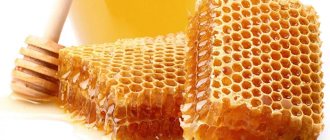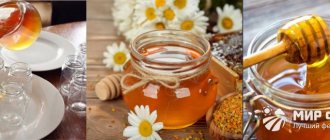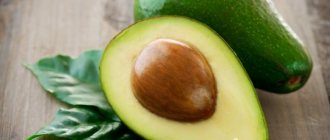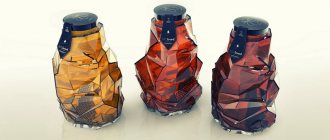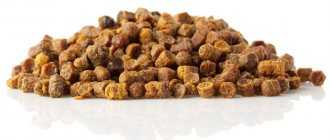- Blog articles
- Honey
Beekeeping
Economics of beekeeping
Beekeeping news in Russia
Beekeeping news in the world
Honey
Propolis
Bee bread
Zabrus
Royal jelly
In the world about bees
Apiary
Bees
News from honey fairs
From the history of beekeeping
- Requirements and storage conditions for honey
- Hygroscopicity of honey
- How to choose the right honey storage container
- Rules for storing comb honey at home
- Shelf life of honey
- Basic rules for storing honey at home
It is no coincidence that this unique natural product is called the “gift of bees” - amazing with a pleasant taste and countless vitamins and microelements. We are talking about honey, the irreplaceable and healing properties of which have been known since ancient times. It strengthens the immune system, helping the body cope with various infections and diseases. To get the maximum benefit from it, you must follow a certain regimen. In the article we will analyze in detail and learn the secrets, consider the basic rules for storing natural honey.
Requirements and storage conditions for honey
All varieties, even those with the optimal composition, retain all their nutritional properties, but are still prone to inactivation of biological components. In this case, aging occurs at an increased rate, especially when a suitable regimen is not followed. In order to preserve its beneficial characteristics, it is advisable to ensure that honey is stored at a constant temperature (for example, in the refrigerator).
Honey should be stored in a dry place, protected from light. Closed cabinets or cardboard boxes are ideal for this purpose. Being hygroscopic, it has the ability to absorb moisture and absorb odors from the environment. It is important to pay attention to the drawer locking system. It is not permissible to leave it near strong-smelling food or building materials. This option is suitable for cottage residents. Residents of megacities can choose a balcony or window sill as a place to store honey (just not in the light, of course!), the optimal humidity is about 60-80%.
How to prolong the freshness of a product: step-by-step instructions
Have you bought honey and are wondering where and how to put it? This simple step-by-step instruction will help you prolong the freshness of the product and keep it healthy even longer than the promised expiration date.
| Steps | Description |
| Step 1. Choose a suitable container. | Regardless of the container in which you purchased honey, it is recommended to store it exclusively in glass containers. Plastic or ceramic vessels are not always suitable. Ideally, the glass should be dark in color. The size of the dishes is also important - it is better if the jars are small. This will help you use the honey more quickly and prevent the remaining amount from spoiling. |
| Step 2: Choose a storage location. | It is best if honey is stored in a dark and not lighted place, for example, in a closed cabinet. |
| Step 3: Create suitable temperature conditions. | To prevent honey from spoiling, its storage temperature should be from 8 to 15°C. If the house is warm, hide the honey in the refrigerator. Temperature changes can also be harmful to the product. Try not to let the honey experience a sudden change in temperature. |
| Step 4. Avoid odors and do not open the honey too often. | Honey instantly absorbs foreign odors, so your task is to stick to the commercial area and keep the vessel closed. If you eat honey every day, you should not open the container with its contents every day. In this case, pour the honey into a small container, and let the rest of the product be in a hermetically sealed container. |
Also remember that metal or galvanized containers are not suitable for storing honey. The honey will react in it and very soon become unusable.
Alternatively, you can use wooden barrels. But remember, many types of wood can cause honey to darken and change its smell and taste.
Can honey last forever?
Video: How to properly store honey at home
Where to store honey, you need to choose one where the climate is cold and stable. A pantry or wooden cabinet in the kitchen is suitable for these purposes. The temperature should be around ten to twenty degrees Celsius. When a treat is exposed to changes in conditions, it may darken and lose taste. If the ambient temperature briefly reaches a high value - above 20C, it should be understood that such changes are not dangerous for sweetness. However, this can contribute to rapid decomposition, loss or deterioration of color, aroma and rare ingredients important to human health. If the weather changes, it is still recommended to place it in the refrigerator.
Freezing
As for freezing, experts still recommend observing a temperature regime limited to -5°C to +20°C. In all other respects, rapid deterioration and changes in the biochemical parameters of the composition occur.
It is also important to consider that during the freezing process, a faster crystallization process occurs. Therefore, if you want to get the product in liquid form, you need to dissolve it through the process of proper kindling. If the correct temperature indicators are maintained, the quality will not change.
Using these recommendations will allow you to preserve everything necessary and valuable in a sweet treat.
Hygroscopicity of honey
When storing purchased honey, you should remember: it has some hygroscopicity, as a result, it easily absorbs various odors and moisture from the outside and retains them. Honey is easily fermented, and this process may be accompanied by the appearance of bubbles. Therefore, it is necessary to carefully close the lid of the jar. The fermentation of sugars and the subsequent appearance of spherical formations is a sign of the beginning of the loss of the taste of honey and its unique quality characteristics.
Even in ancient times, attention was paid to the hygroscopicity of honey. It was noted that honey should never be stored in barrels made from fresh, raw wood. Due to its hygroscopicity, honey dried out (took up moisture), after which significant cracks appeared in the walls. With the appearance of cracks, the question of the tightness of such barrels was no longer raised - honey simply flowed out of them.
How to choose the right honey storage container
To keep the “gift of bees” fresh and healthy for a long time, you need to choose a special container.
- Clay pots
or any other container are great for storing honey for a long time. A distinctive advantage is that it does not allow sunlight to enter, and prevents the penetration of third-party aromas and moisture. It is no coincidence that our ancestors chose and preferred clay utensils for these purposes.
- Plastic box
. Most manufacturers choose plastic only because it is lightweight and easy to transport. However, if it has an unpleasant odor, it is better to avoid using it at home. The container must be marked with special signs: PP, PP or “5”, which confirm their safety and stability. - Glass jars
are convenient and safe for storing fresh honey. The glass material itself does not react with the substances contained in them, and therefore does not emit unpleasant and dangerous substances and toxins. The only negative is the ability to transmit sunlight. A dark-colored container will do. The disadvantage of such dishes is fragility and high cost. - Wooden utensils
can influence the organoleptic properties, give it a truly excellent aroma, while preserving all the microelements and features. However, you need to take a close look at the choice of container. The best option is dishes made of birch, linden, and beech. You should not take containers made from wood species that emit essential oils (conifers, for example). - A metal container
is not a very suitable alternative. The thing is that the metal oxidizes over time, which negatively affects the properties, and after consumption, the health and well-being of people who can become poisoned. In this case, you need to choose the right metal utensils. An excellent option is containers that do not contain zinc, copper and lead.
Is there a shelf life for sweets and how long is it according to GOST?
Although many claim that there has been no change in this product over the years, this is not true. As soon as the container with honey is opened, bacteria and moisture get inside along with the air. For this reason, its chemical composition begins to change smoothly, and its beneficial properties disappear over time.
According to GOST 19792-2017, the shelf life of natural honey from the moment of opening is 1 year , and in an airtight container it can be stored, including at room temperature, for up to 2 years.
Rules for storing comb honey at home
If you managed to buy this amazing product, you will have to comply with certain storage conditions.
- The first is the humidity level, we recommend no higher than 60%. In this case, the room must be ventilated. Residents of big cities can put it in the refrigerator.
- Secondly, the honey storage temperature is about 3-10 °C.
- The third is a dark closet. You should not leave vegetables or fruits that have a pronounced pungent aroma nearby. We do not recommend leaving them in close proximity to comb honey.
To do this, the honeycombs are cut into pieces and placed side by side in clean containers. Cover tightly with lids. Please note that not all of them may be suitable for this purpose. You should not choose metal - copper, lead, zinc. When coming into contact with treats, substances are formed that can cause serious poisoning. It is best to choose a glass jar or ceramic pot.
By following all the above recommendations, you can preserve honeycombs for many years. They will not lose their valuable qualities.
Is it possible to use expired
It is strictly prohibited to use expired food. After a set period, vitamins and nutrients disappear, and the fermentation process begins.
In addition, if we are talking about plastic containers, then the material has already released toxic particles into the contents, and the product has become dangerous. May cause poisoning, as well as systemic malfunctions of internal organs.
However, there is a way to partially revive honey. If fermentation has just begun, you need to completely remove the foam from the surface and put it in a water bath to warm up.
IMPORTANT! The temperature should not be higher than 37 °C.
It takes 40 minutes to warm up. During this time, pathogenic microorganisms will be destroyed and the storage period will be extended. However, it is better not to eat it, but to use it for cosmetic masks, massages, and going to the bathhouse.
Shelf life of honey
Under the influence of external factors, the organoleptic characteristics of honey change. Healing characteristics may be lost even if a number of recommendations are followed. Therefore, it is recommended to keep it at home for no more than two years. When exposed to light and humidity, the beneficial qualities can quickly evaporate. It begins to darken, crystallize and thicken just a couple of weeks after pumping out of the frames.
In apartment conditions, when the temperature constantly reaches more than 22C, spoilage can occur much faster. At high temperatures, honey begins to deteriorate and darken within six to nine months.
Correct temperature
It is best to store bee nectar where it is between 5 and 15 degrees Celsius.
It should not be exposed to high temperatures so as not to lose its beneficial properties and pleasant taste.
This is why experts do not recommend adding it to hot drinks - it simply won’t do any good. It is better to wait until the liquid has cooled a little, or there is a sweetness to taste.
Cold has a negative effect on the consistency of the product rather than on its healing characteristics. At relatively low temperatures (but not colder than -20 degrees), honey brightens and hardens.
Basic rules for storing honey at home
In order for healthy food to last as long as possible, it is necessary to comply with the established standards:
- The ideal ambient temperature is no more than 20 °C. Keep in a cool, dry place. The container should be tightly closed.
- Away from the light. Excessive sunlight can negatively affect its quality. In particular, this leads to the transformation and activation of negative factors, especially the enzyme that responds to antibiotic activity.
- A pantry or cellar is an ideal place to store high-quality honey, which will help preserve the taste and unique properties of sweetness. However, you need to make sure that these places are far enough away from the oven, stove, boilers and heating lines of the house.
